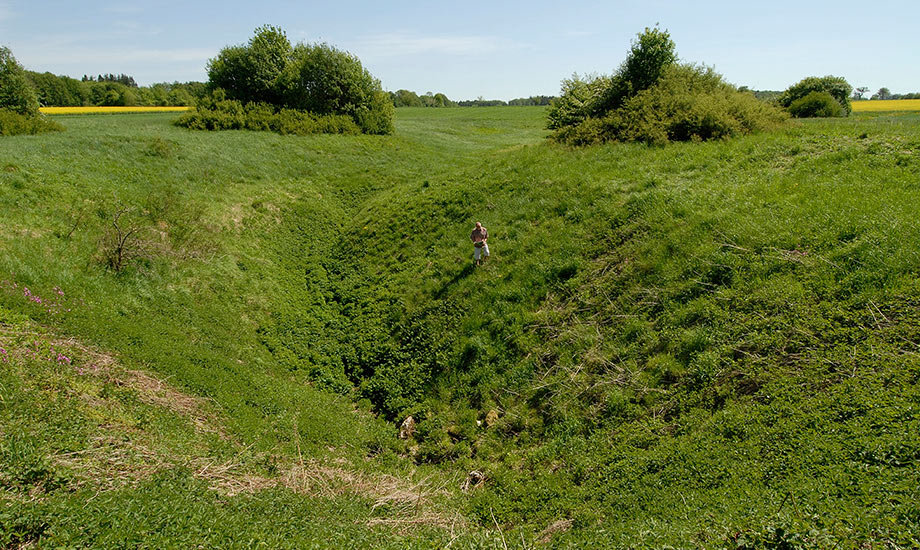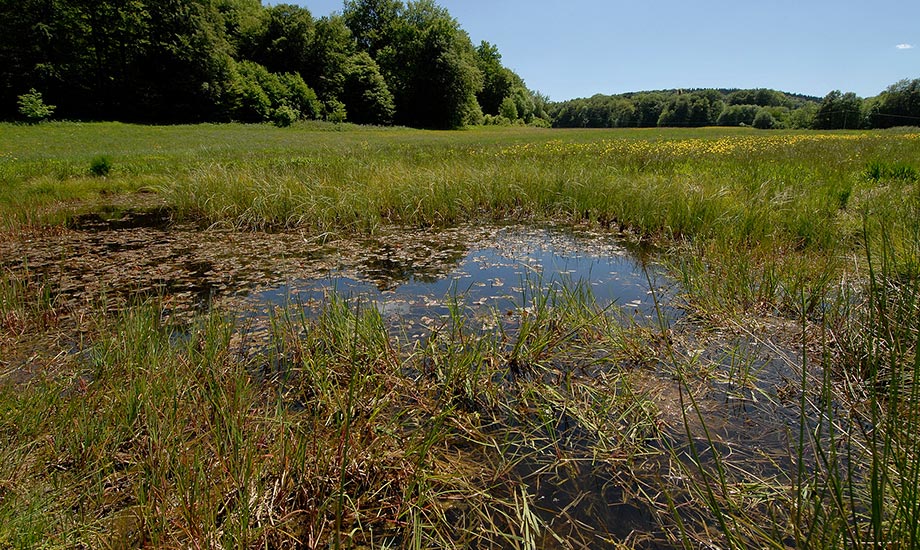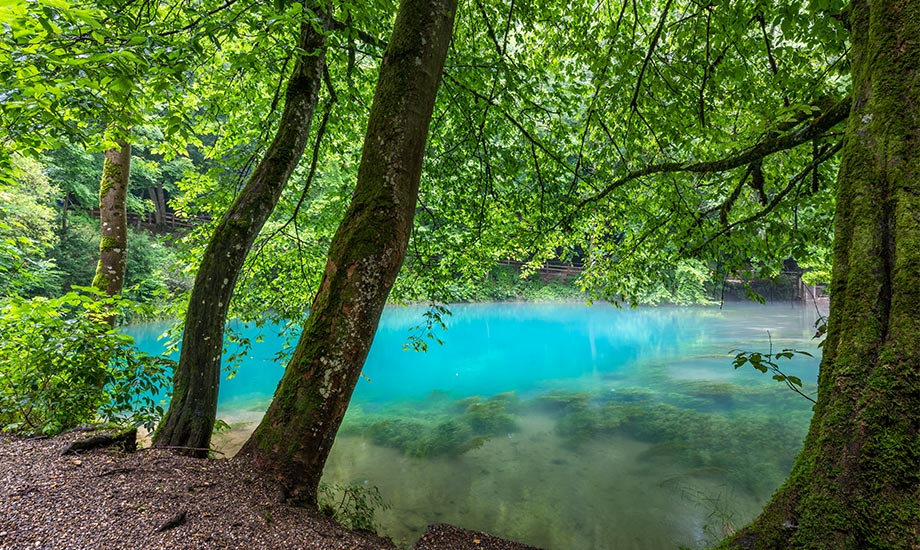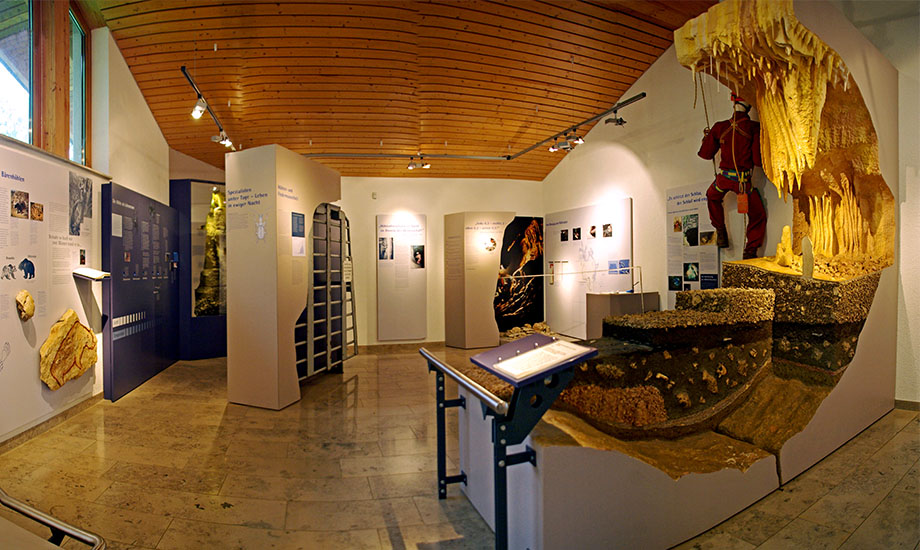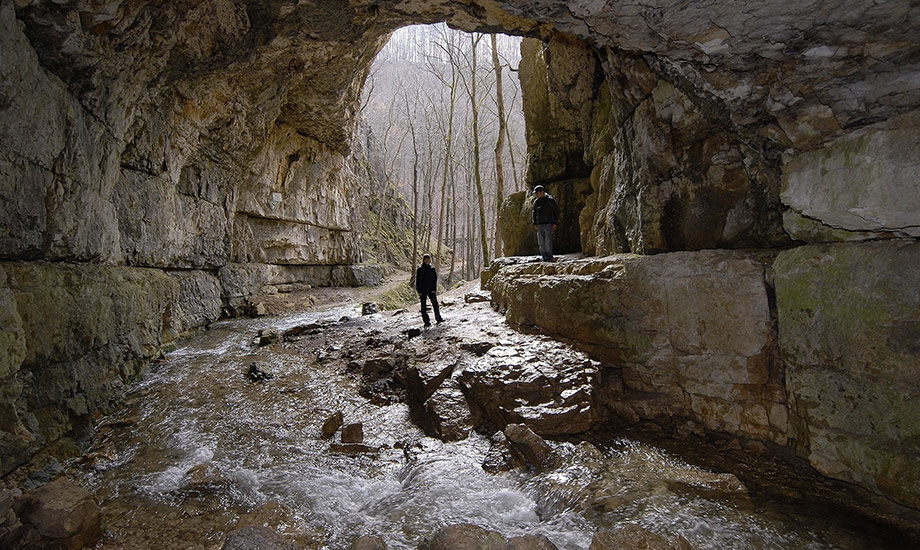What is karstification?
Today’s landscape of the Swabian Alb it a result of the limestones in the subsoil and their characteristic solution behaviour. Limestone is dissolved by slightly acidic rainwater and transported away, resulting in typical solution forms and phenomena that are collectively referred to as karstification. These include large underground cave systems, landscape-defining dry valleys and sinkholes, but also smaller superficial solution forms, such as the so-called karsts (see "Karst Forms").
For karst to form, several factors must come at once: Soluble rock in the subsoil (limestone or gypsum), sufficient precipitation, and the existence of a slope and a lower lying watercourse (receiving watercourse).
This is the case in the Swabian Alb: soluble limestone from the Jurassic period with numerous fissures and crevices, sufficient rainfall and, as a low mountain range, also a relevant difference in altitude to the river systems of the Danube and Rhine.
Above-ground bodies of water such as rivers or streams are rare in karst landscapes, since precipitation seeps away very quickly through cracks and crevices in the subsoil. There, the water collects, forms streams and creeks in cave systems and emerges again at karst springs. These karst springs often have a large catchment area. The Blautopf in Blaubeuren drains 160 square kilometres of the Alb plateau (see "The way of water").
Karst areas are usually barren and dry as well because the soil coverage very thin and thus water cannot be stored there for a long time. This produces typical habitats with high biodiversity. However, these shallow soils entail another problem: If the water seeps quickly through the few centimetres of soil, it is hardly purified by the natural filtering effect.
